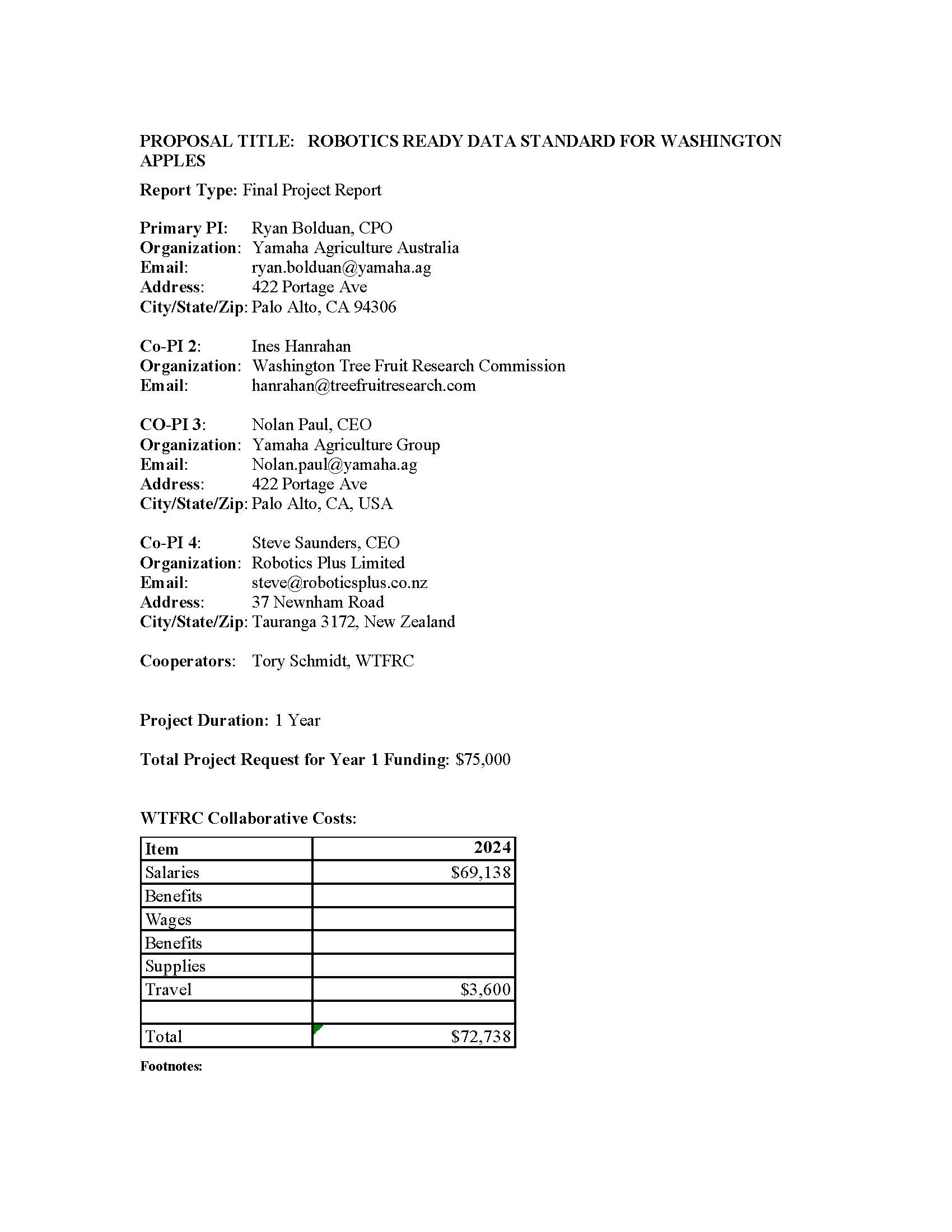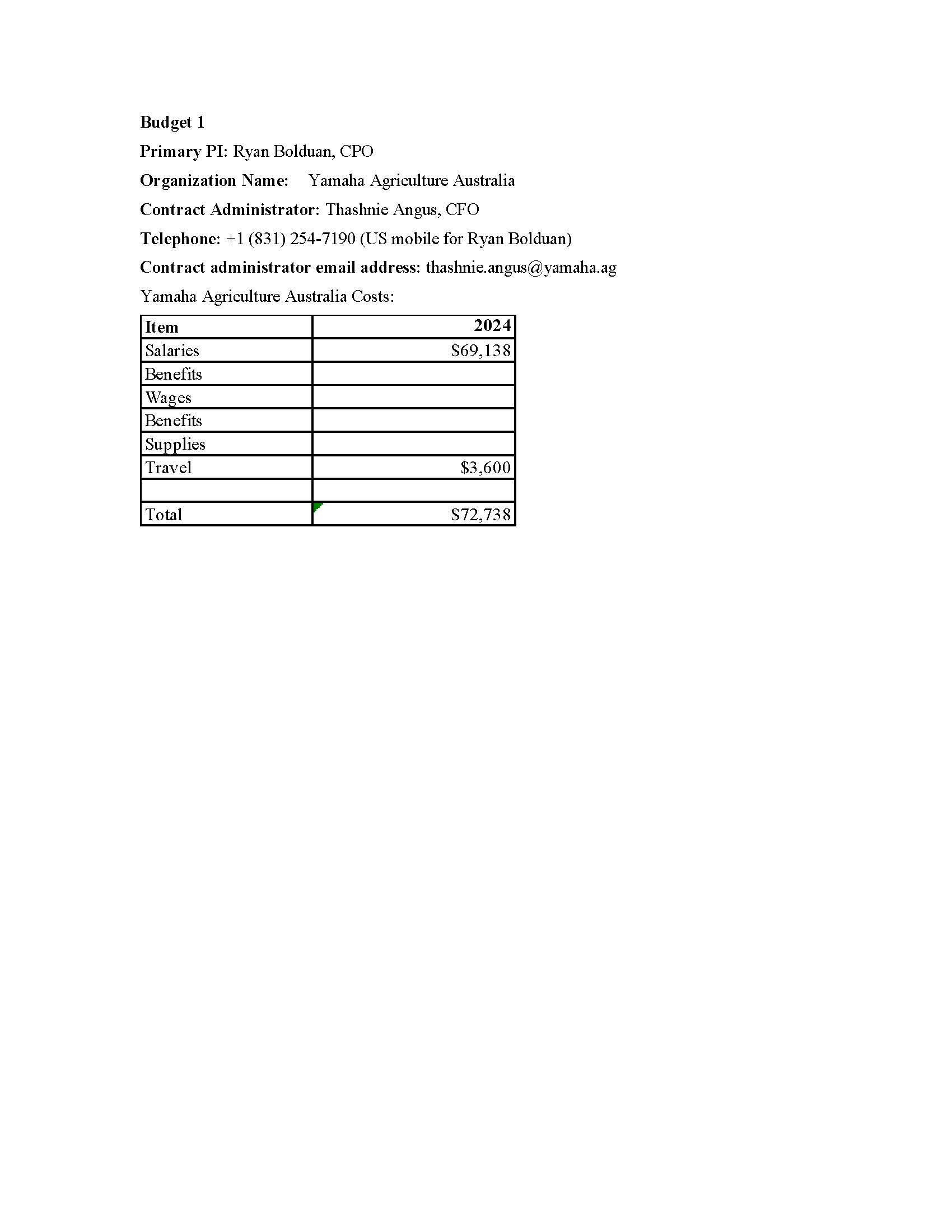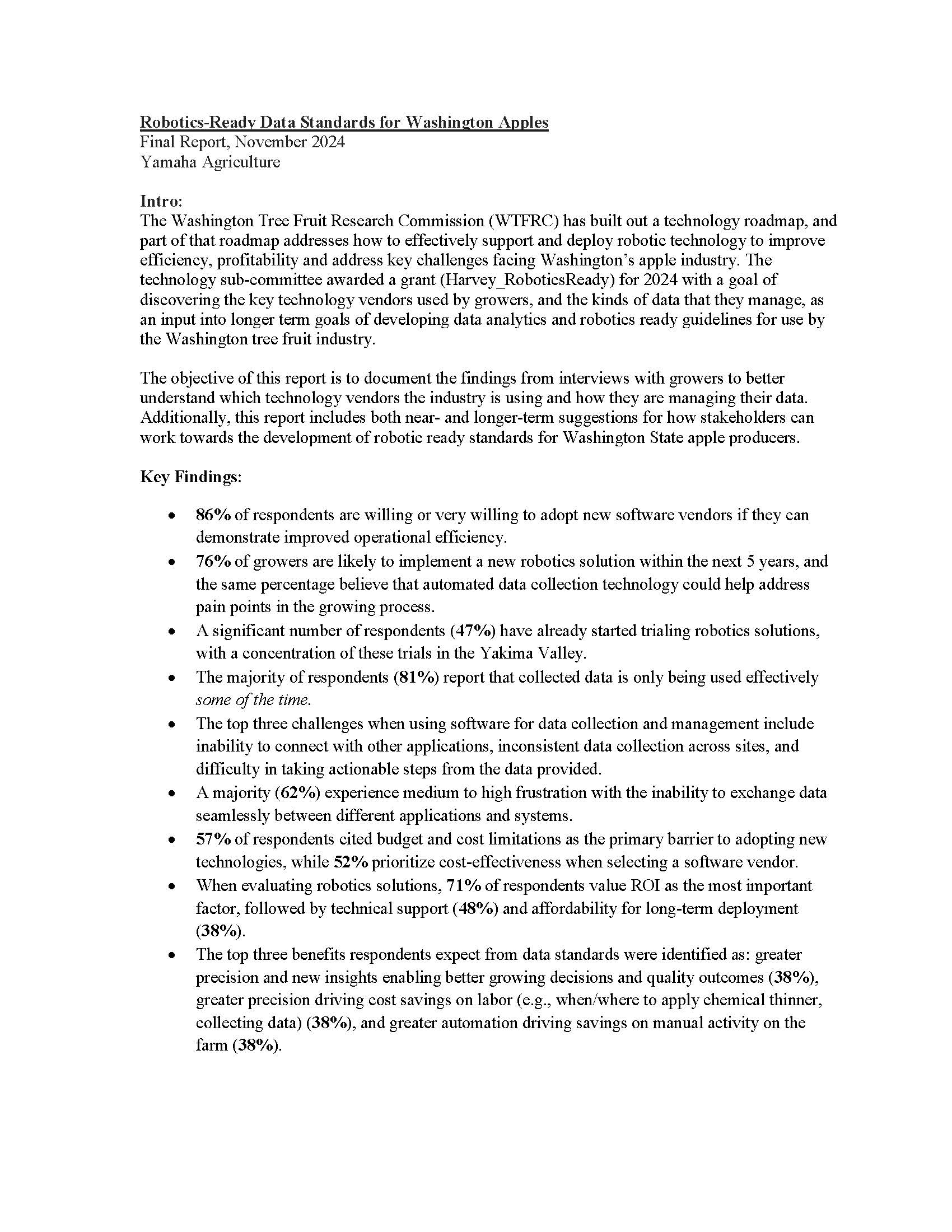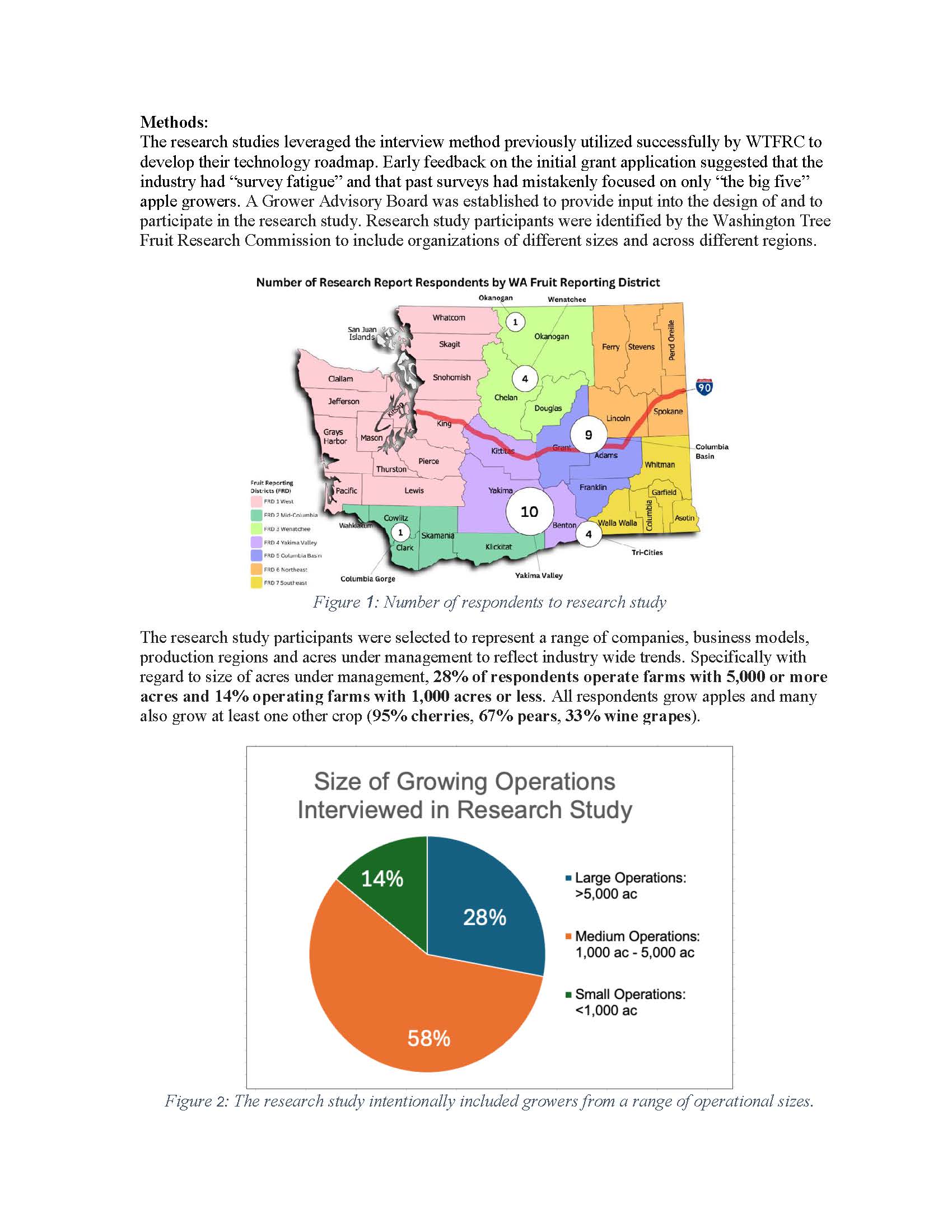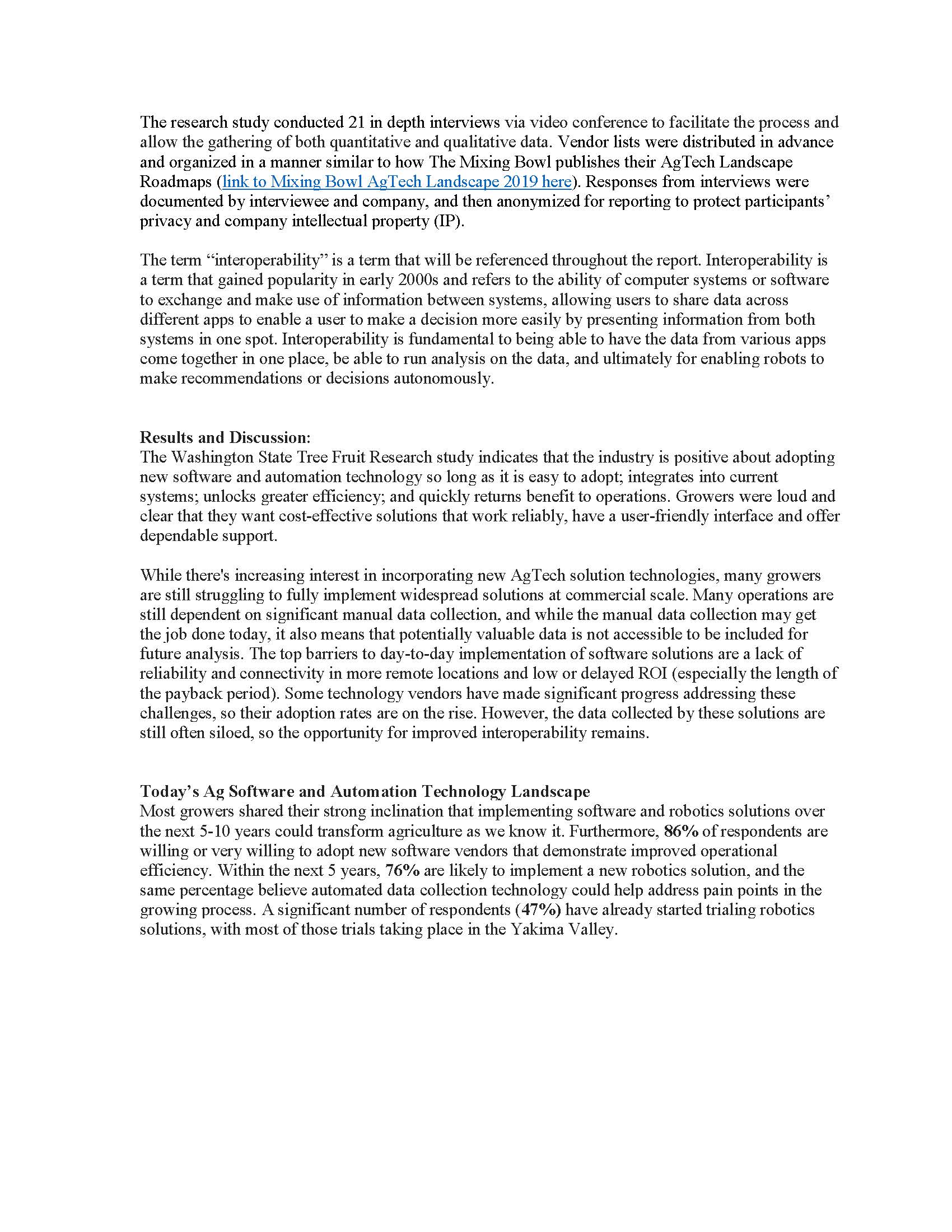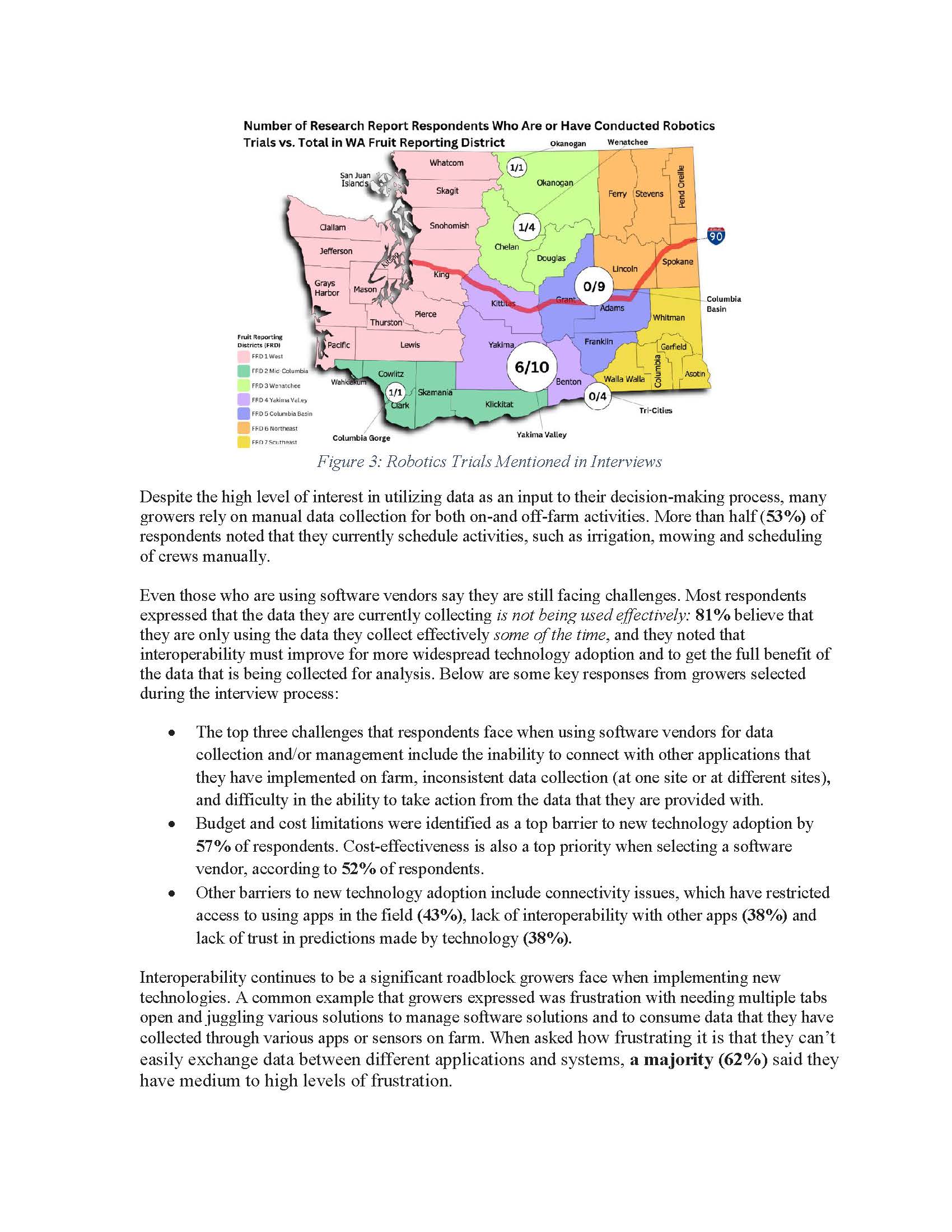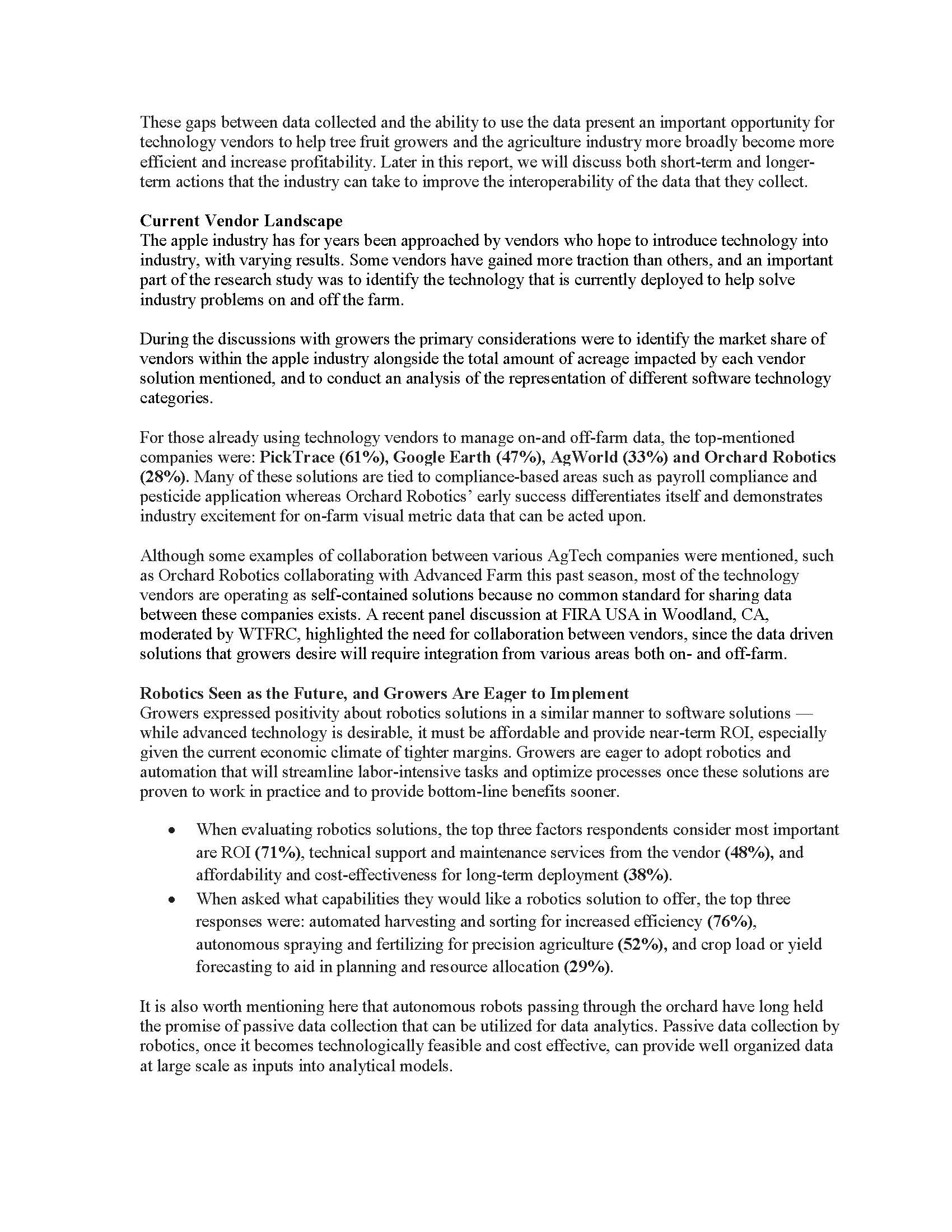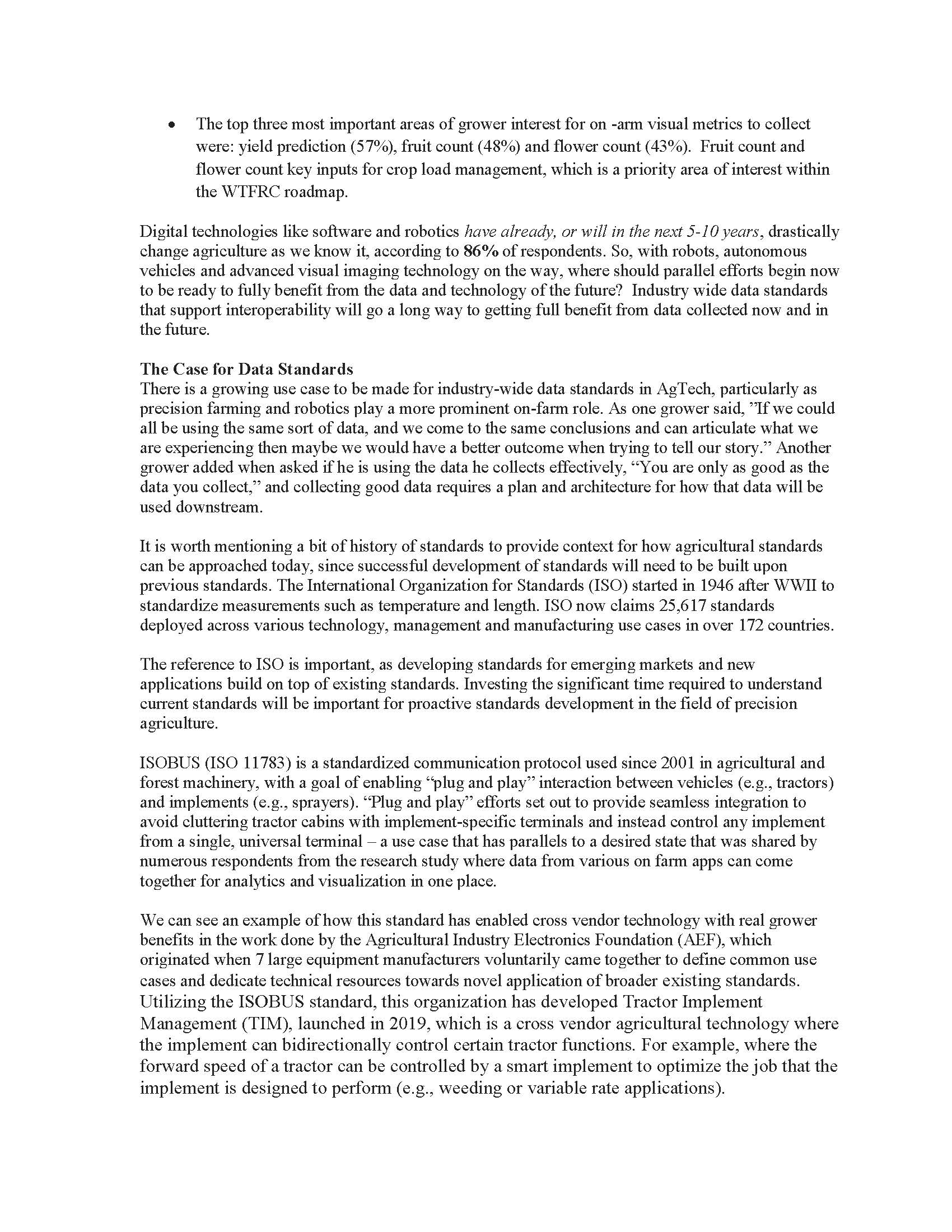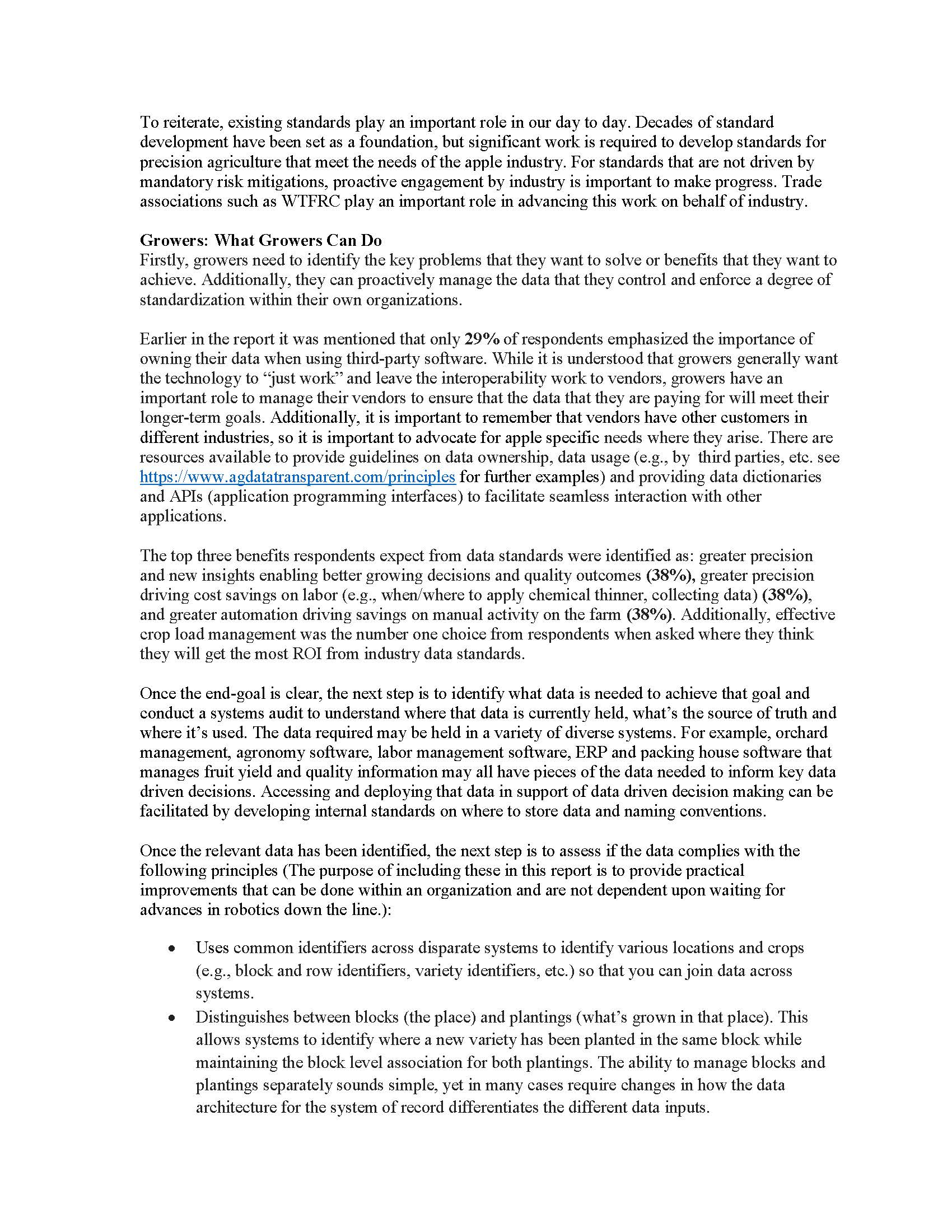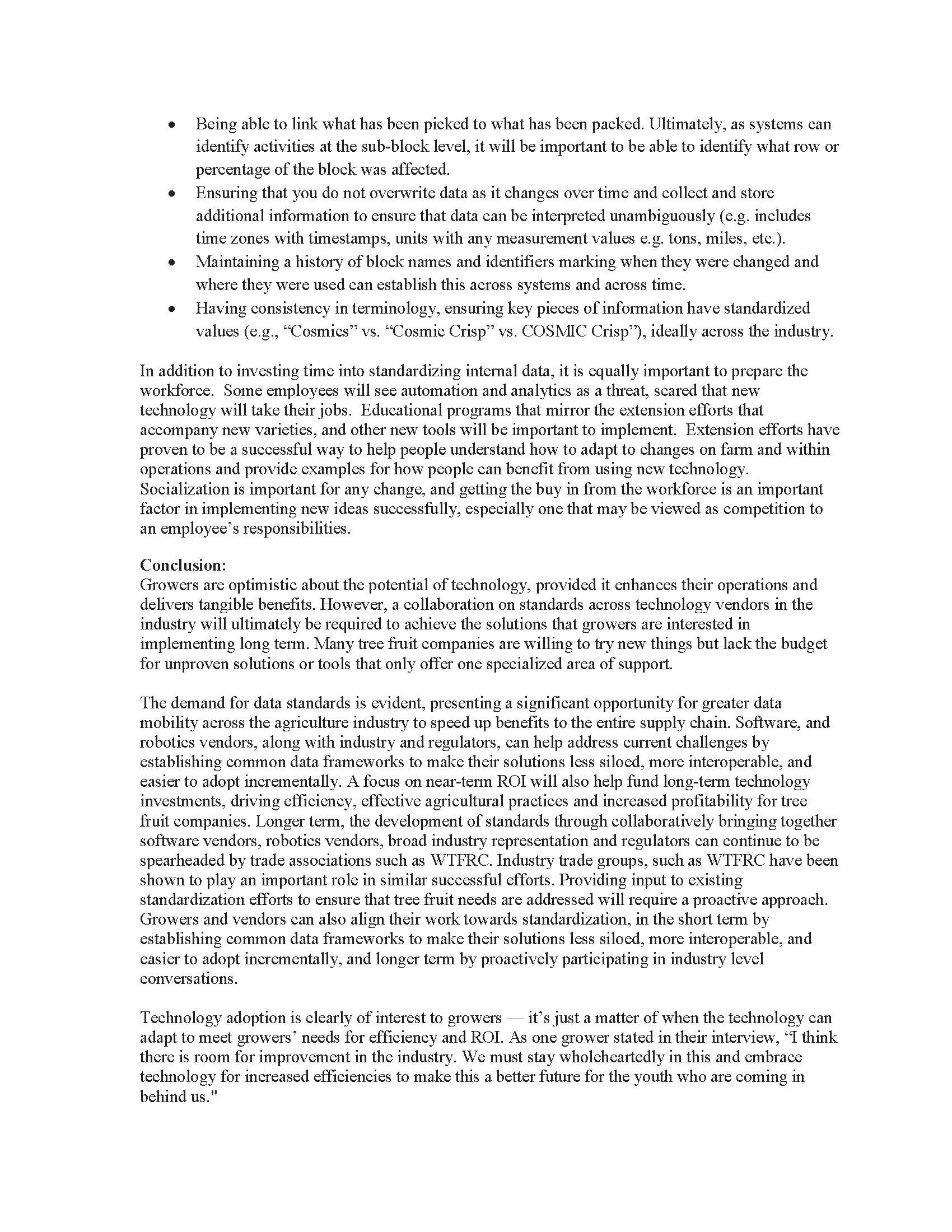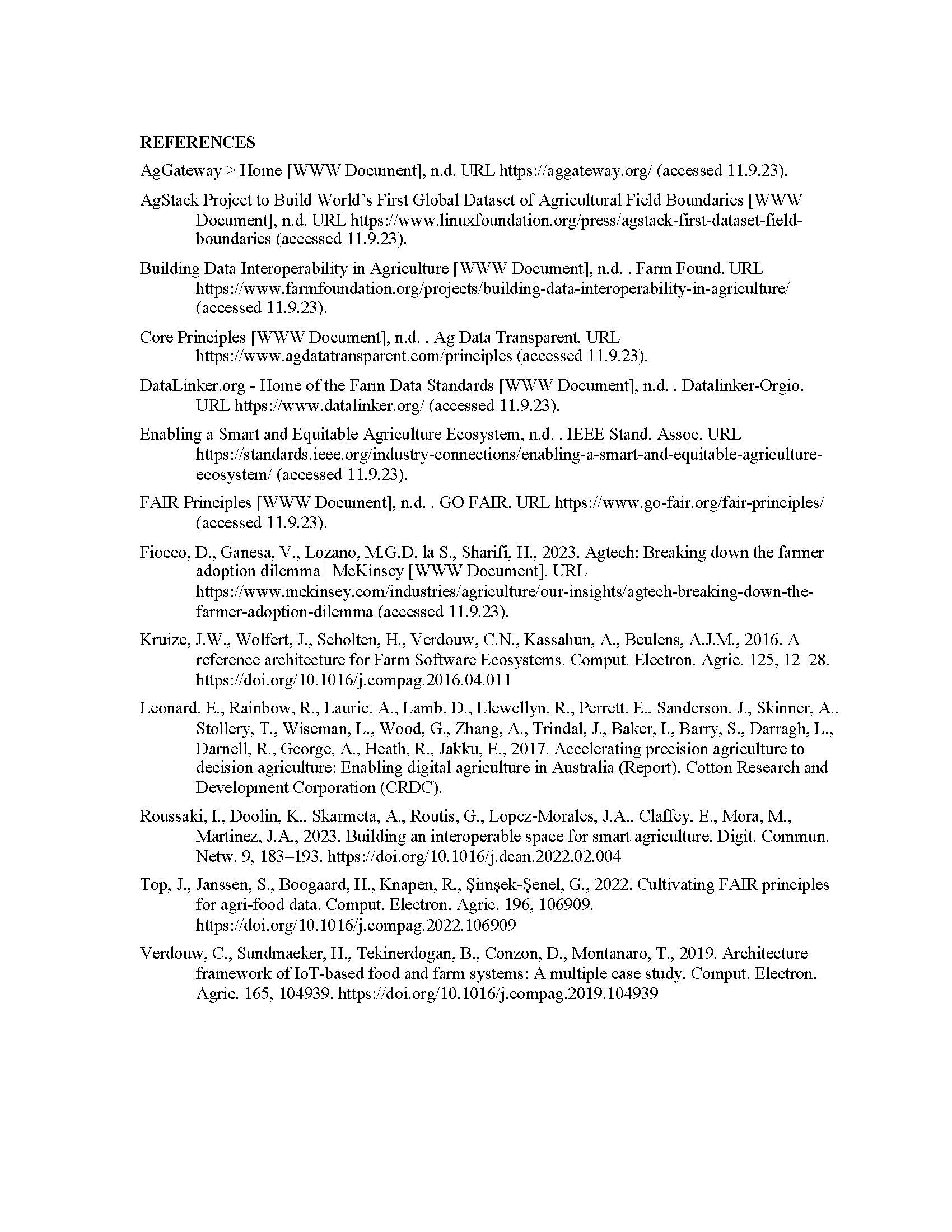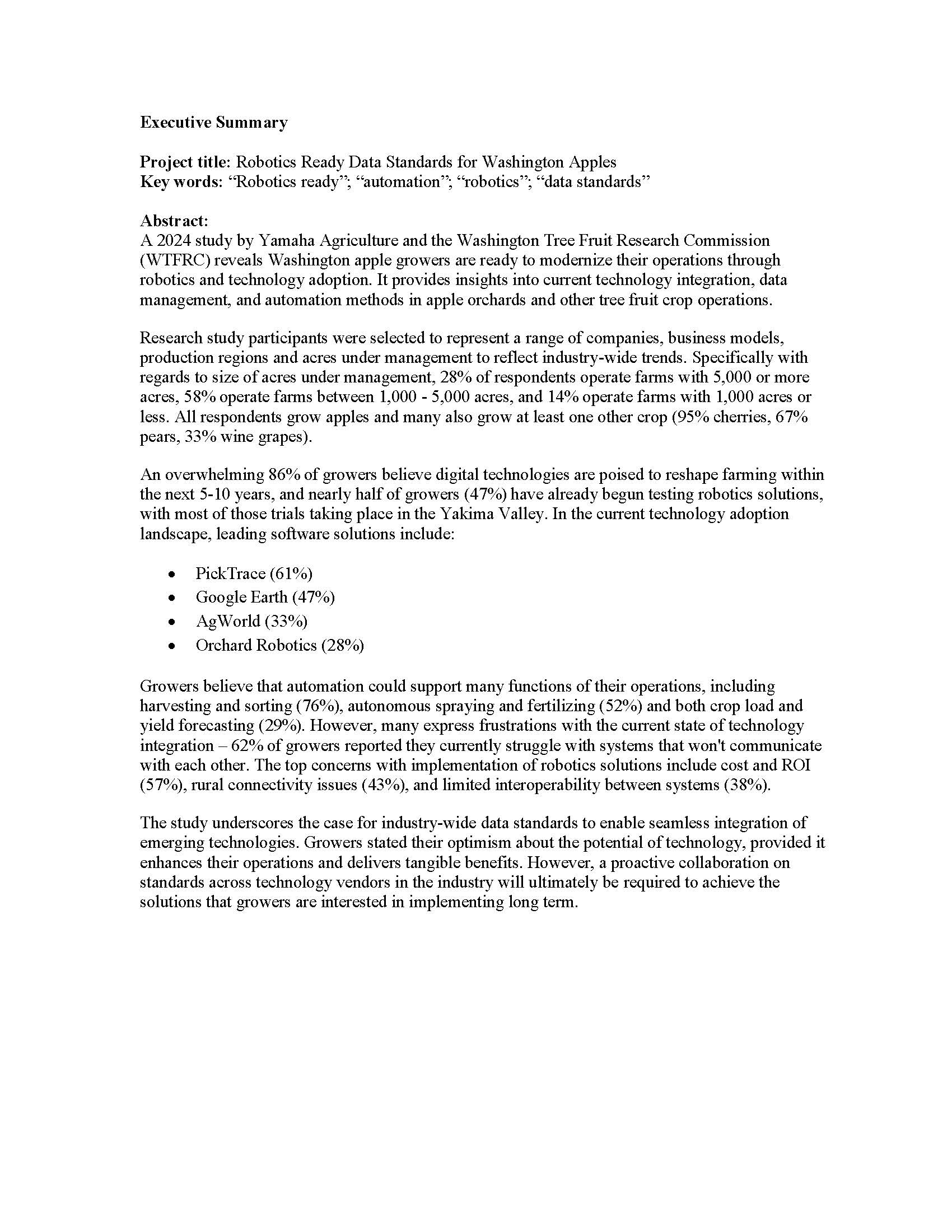ROBOTICS READY DATA STANDARD FOR WASHINGTON APPLES
Author: Ryan Bolduan, CPO
Published: 2025
Summary: A 2024 study by Yamaha Agriculture and the Washington Tree Fruit Research Commission (WTFRC) reveals Washington apple growers are ready to modernize their operations through robotics and technology adoption. It provides insights into current technology integration, data management, and automation methods in apple orchards and other tree fruit crop operations. Research study participants were selected to represent a range of companies, business models, production regions and acres under management to reflect industry-wide trends. Specifically with regards to size of acres under management, 28% of respondents operate farms with 5,000 or more acres, 58% operate farms between 1,000 - 5,000 acres, and 14% operate farms with 1,000 acres or less. All respondents grow apples and many also grow at least one other crop (95% cherries, 67% pears, 33% wine grapes). An overwhelming 86% of growers believe digital technologies are poised to reshape farming within the next 5-10 years, and nearly half of growers (47%) have already begun testing robotics solutions, with most of those trials taking place in the Yakima Valley. In the current technology adoption landscape, leading software solutions include: • PickTrace (61%) • Google Earth (47%) • AgWorld (33%) • Orchard Robotics (28%) Growers believe that automation could support many functions of their operations, including harvesting and sorting (76%), autonomous spraying and fertilizing (52%) and both crop load and yield forecasting (29%). However, many express frustrations with the current state of technology integration – 62% of growers reported they currently struggle with systems that won't communicate with each other. The top concerns with implementation of robotics solutions include cost and ROI (57%), rural connectivity issues (43%), and limited interoperability between systems (38%). The study underscores the case for industry-wide data standards to enable seamless integration of emerging technologies. Growers stated their optimism about the potential of technology, provided it enhances their operations and delivers tangible benefits. However, a proactive collaboration on standards across technology vendors in the industry will ultimately be required to achieve the solutions that growers are interested in implementing long term.
Keywords:

